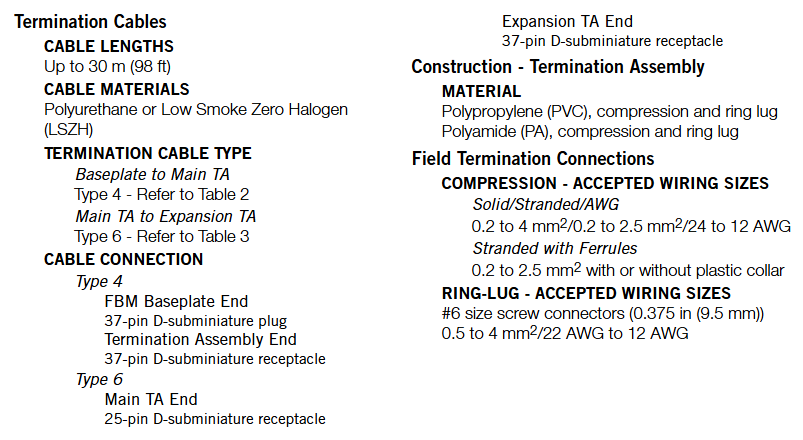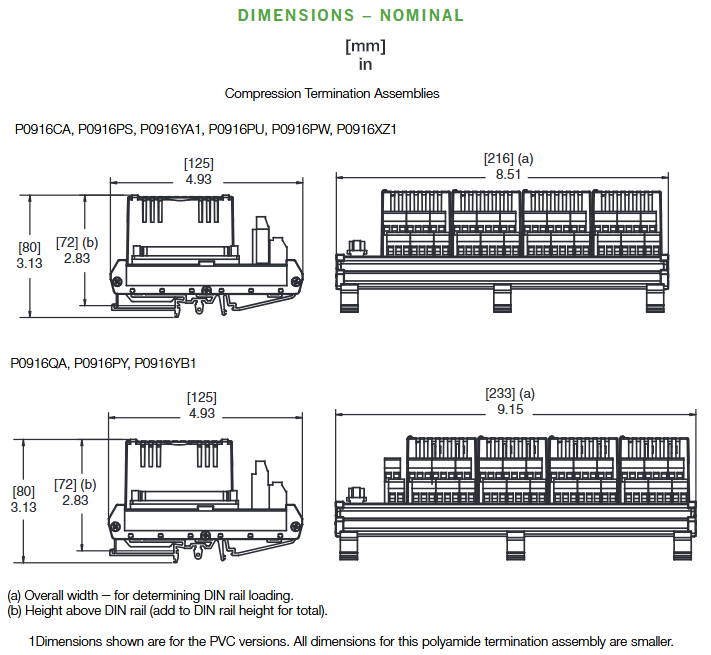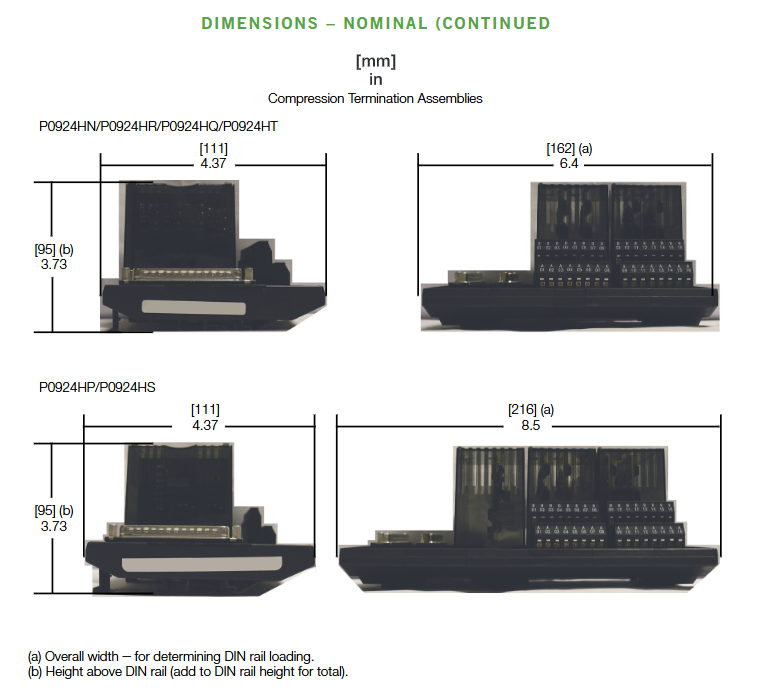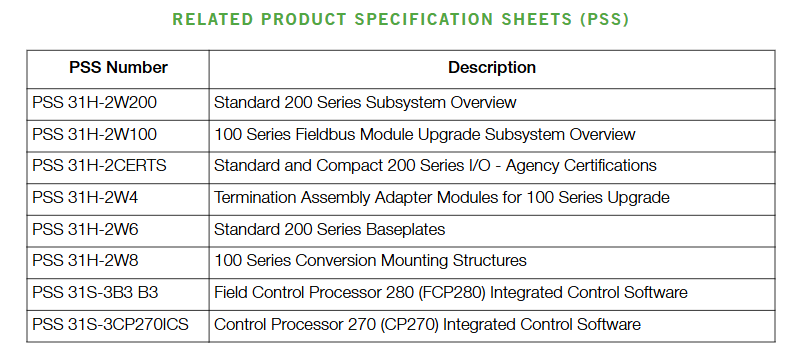

K-WANG


Foxboro Evo ™ FBM217 Discrete Input Module
Foxboro Evo ™ FBM217 Discrete Input Module
Product positioning: FBM217 is a highly compatible and reliable 32 channel discrete input module, suitable for the acquisition of various switch signals (such as sensors, contactor contacts) in industrial sites. It supports single module independent operation or dual module redundant configuration, and is widely used in industries such as petrochemicals, power, and manufacturing that require high signal stability.
Product Core Features
The FBM217 module meets the high requirements of industrial scenarios through hardware design and functional optimization, with the following core features:
Multi channel and wide voltage support:
Provides 32 discrete input channels, with a single channel that can flexibly adapt to multiple signal types: 15-60V DC (low voltage), 120V AC/125V DC (medium voltage), 240V AC (high voltage), compatible with voltage monitoring (requires external power supply) and contact detection (can use module auxiliary power supply) modes.
Support cascading of "main extension" terminal components (TA), which can increase signal access capability by extending TA and adapt to upgrade and replacement scenarios of 100 series FBM modules (such as FBM07A/B, FBM20).
Redundancy and reliability design:
Support single module or dual module redundant configuration: In redundant mode, two FBM217s share a terminal component through a redundant adapter (P0926ZY), doubling the field input current. When the module fails, it automatically switches to the backup module, ensuring uninterrupted signal acquisition.
The redundant logic is implemented by the CINR function block of Foxboro Evo control software, which synchronously reads data from two modules during each execution cycle, selects high-quality signals to participate in control, and enhances the system's fault tolerance.
Signal processing and protection:
Programmable filtering/debounce time: supports 5 configurations of "no filtering, 4ms, 8ms, 16ms, 32ms", which can be adjusted according to the on-site interference situation to reduce signal false triggering caused by high-frequency noise.
Terminal assembly (TA) integrated protection function: including high-voltage attenuation circuit, optocoupler isolation, current limiting device, some TAs support channel level or group level isolation (such as P0916PS/PT supporting channel isolation), withstand 600V AC (1 minute) to ground voltage, and avoid signal surge damage to the module.
Convenient maintenance and visualization:
Integrated LED indicator lights on the front panel: display module operating status (such as bus communication, power supply) and discrete status of 32 channels (on/off), intuitively locating faulty channels.
Hot swappable design: Modules can be replaced without disconnecting field wiring, power or communication cables. Under redundant configuration, replacing a single module does not affect field signal input and reduces system downtime.

Functional specification parameters
(1) Input signal and electrical parameters
Parameter category specific specifications
32 channels, group isolation (some TAs support channel isolation)
On State voltage 15-30V DC (low voltage); 80-132V AC/75-150V DC (medium voltage); 164-264V AC (high voltage)
Off State voltage 0-5V DC (low voltage); 0-20V AC/0-20V DC (medium voltage); 0-40V AC (high voltage)
Typical input current 2.2mA (at 30V DC); 1.6mA (maximum value at high voltage)
When the source resistance limits conduction, it is ≤ 1k Ω (15V DC); When turned off, ≥ 100k Ω (30V DC)
Pulse counting capability up to 250Hz, supporting pulse signal acquisition (such as flow meter pulses)
(2) Communication and Power Supply
Communication interface: Connected to the fieldbus communication module (FCM) or control processor (FCP) through a 2Mbps module fieldbus, supporting A/B dual path redundancy, automatically switching to the backup path in case of single path failure, ensuring data transmission continuity.
Power requirements:
Input voltage: 24V DC (in redundant configuration), allowing ± 5% (upper limit) and -10% (lower limit) fluctuations.
Power consumption: maximum 3W (at 24V DC); Thermal Dissection: Maximum 5W (at 24V DC), no additional calibration required.
(3) Isolation and protective performance
Isolation level: The module and terminal assembly (TA) combination has high isolation capability, and the group isolation TA (such as P0916CA, P0924HA) can withstand 600V AC (1 minute) to ground voltage; High voltage TA (such as P0916PY, P0916QB) meets UL dielectric potential requirements, and channel isolation TA (such as P0916PS, P0916PU) further enhances anti-interference ability.
Electromagnetic compatibility (EMC): Complies with the European EMC Directive 2004/108/EC and multiple international standards, as follows:
Radiation emission: EN 50081-2 (industrial environment) CISPR 11 Class A;
Immunity: ESD (contact 4kV/air 8kV), radiation field (10V/m, 80-1000MHz), electrical fast transient (2kV, I/O/power/communication line), surge (2kV AC/DC power line, 1kV I/O/communication line), etc.

Environmental and Physical Specifications
(1) Environmental adaptability
The FBM217 module and terminal assembly (TA) meet the requirements of harsh industrial environments, with specific parameters as follows:
Environmental Category Module (FBM217) Terminal Assembly (TA) - PVC Material Terminal Assembly (TA) - PA Material
Working temperature -20~+70 ℃ (-4~+158 ° F) -20~+50 ℃ (-4~+122 ° F) -20~+70 ℃ (-4~+158 ° F)
Storage temperature -40~+70 ℃ (-40~+158 ° F) -40~+70 ℃ (-40~+158 ° F) -40~+70 ℃ (-40~+158 ° F)
Relative humidity 5%~95% (no condensation) 5%~95% (no condensation) 5%~95% (no condensation)
Altitude work: -300~+3000m (-1000~+10000ft); Storage: -300~+12000m (-1000~+40000ft) same module same module
The pollution level complies with ISA S71.04 G3 level (harsh environment) and has passed EIA 364-65 Class III exposure testing for the same module
Vibration tolerance 0.75m/s ² (5-500Hz) same module same module
(2) Physical and installation parameters
Module size and weight:
Dimensions: Height 102mm (4in, excluding mounting ears)/114mm (4.5in, including mounting ears), Width 45mm (1.75in), Depth 104mm (4.11in);
Weight: Approximately 284g (10oz), lightweight design facilitates dense installation.
Installation method:
Module: Installed on a DIN rail base plate (supporting 4 or 8 slots), the base plate can be installed horizontally/vertically on a DIN rail, or adapted to a 19 inch rack through an installation kit; Redundant modules need to be installed in odd even positions adjacent to the base plate (such as slots 1-2 and 3-4).
Terminal Assembly (TA): DIN rail mounting, compatible with 32mm (1.26in) and 35mm (1.38in) standard rails, supports compression terminals (24-12 AWG wires) or ring terminal blocks (22-12 AWG wires).
Cable specifications:
Base board to main TA: Use Type 4 cable (37 pin D-sub interface), with a maximum length of 30m (98ft), optional polyurethane (P/PVC), low smoke halogen-free (LSZH) materials, suitable for temperature resistance and environmental protection requirements in different environments;
Main TA to Extended TA: Use Type 6 cable (25 pins on the main TA end and 37 pins on the extended TA end), with a length of 0.75m (2.5ft), only available in LSZH material.

Terminal Assembly (TA) and Compatibility
Terminal assembly (TA) is a key interface between FBM217 and on-site equipment, providing signal conditioning, isolation, and power distribution functions. Different TAs are adapted to different signal scenarios, and the core parameters are as follows:
(1) Classification and adaptation of main terminal assembly (TA)
FBM type input signal type TA model (PVC/PA material) terminal type cable type certification level
FBM217 30V DC Voltage Monitoring (Group Isolation) P0916CA/P0916CB Compression/Ring Lug Type 4 1, 2, 4
FBM217 24V DC contact detection (group isolation) P0916PW/P0916PX (PVC); P0916XZ (PA) Compression/Ring Lug Type 4 1, 2, 4
FBM217 120V AC/125V DC voltage monitoring (channel isolation) P0916PS/P0916PT (PVC); P0916YA (PA) Compression Type 4 1, 4
FBM217 120V AC/125V DC contact detection (group isolation) P0916PY/P0916PZ (PVC); P0916YB (PA) Compression/Ring Lug Type 4 1, 4
FBM217 240V AC Voltage Monitoring (Channel Isolation) P0916PU/P0916PV Compression/Ring Lug Type 4 1
FBM217 240V AC Contact Detection (Group Isolation) P0916QA/P0916QB Compression/Ring Lug Type 4 1
FBM217 replaces FBM07A (15-130V DC voltage monitoring) P0924HA compression type 4 1, 2, 4
FBM217 replaces FBM08 (120V AC/125V DC voltage monitoring) P0924HC compression type 4 1, 4
(2) Expansion Terminal Assembly (TA) adaptation
Expanding TA is used to increase the number of channels and needs to be cascaded with the main TA to adapt to the upgrade of the 100 series extended FBM module. The core models are as follows:
Compatible with 100 series extended FBM input signal specifications, extended TA model (PA material), cable type certification level
FBM12A/B (16 contacts/voltage) with main TA P0924HA P0924HB Type 6 1, 2, 4
FBM13 (16 channel voltage monitoring) with main TA P0924HC P0924HD Type 6 1, 4
FBM21 (16 channel voltage monitoring) with main TA P0924HL P0924HM Type 6 1
FBM25B (16 way contact detection) with main TA P0924HP P0924HS Type 6 1, 2, 4
(3) Certification Level Definition (Table 1)
TA certification strictly follows international safety standards, and different levels correspond to different application scenarios:
Type 1: UL/UL-C certification, suitable for Class I A-D Group 2 hazardous environments (temperature code T4); CENELEC (DEMKO) certification for Zone 2 potentially explosive environments (EEx nA IIC T4).
Type 2: In addition to Type 1, it also meets the requirements of "non flammable on-site circuits" and is compatible with Class 2 limited energy circuits (60V DC/30V AC, ≤ 100VA).
Type 4: All on-site circuits meet Class 2 limited energy requirements and require external equipment to comply with Class 2 restrictions.
Compliance Certification and System Integration
(1) Regulatory Compliance Certification
The FBM217 module and TA have passed multiple international certifications to ensure compliant use in different regions and industries
Electromagnetic compatibility (EMC): Complies with the European EMC Directive 2004/108/EC, meets EN 50081-2 (emission), EN 50082-2 (immunity), EN 61326 (industrial grade) standards, is compatible with CISPR 11 Class A limits, and is resistant to interference such as ESD, radiated fields, and electrical fast transients.
Product safety:
UL/UL-C certification: applicable to Class I A-D Group 2 hazardous environments (T4 temperature code), as an "associated device" supplying power to non flammable circuits;
European Low Voltage Directive (2006/95/EC) and ATEX Directive (94/9/EC): CENELEC (DEMKO) certified, suitable for Zone 2 environments, supplying power to Group IIC non flammable field circuits.
(2) System integration and upgrade
100 series FBM module upgrade: FBM217 can directly replace 100 series discrete input modules (such as FBM07A/B, FBM08, FBM20), and achieve hardware compatibility and functional upgrades by adapting the corresponding TA (such as P0924HA replacing FBM07A), without the need to reconstruct on-site wiring.
Event Sequence (SOE) Integration: Supports SOE functionality for Foxboro Evo v8. x and above software, combined with GPS time synchronization (optional), enabling millisecond level event collection, storage, and reporting across control processors; Versions below v8. x require SOE implementation through ECB6 and EVENT blocks, with a time accuracy of seconds and no cross processor synchronization.

- YOKOGAWA
- Energy Access
- Renewable Integration
- Energy Subsidies
- Energy and Water
- Net zero emission
- Energy Security
- Critical Minerals
- A-B
- petroleum
- Mine scale
- Energy and Gender
- Covid-19
- man-machine
- Reliance
- ADVANCED
- SEW
- ProSoft
- WATLOW
- Kongsberg
- FANUC
- VSD
- DCS
- PLC
- Sewage treatment
- cement
- Yaskawa
- Woodward
- BOSCH Rexroth
- MOOG
- General Electric
- American NI
- Rolls-Royce
- CTI
- Honeywell
- EMERSON
- Automobile market
- xYCOM
- Motorola
- architecture
- Industrial information
- New energy
- electricity
- Construction site
- HIMA
- ABB
- Rockwell
- Schneider Modicon
- Siemens
- MAN
- GE
- TRICONEX
- Control Wave
- ALSTOM
- AMAT
- STUDER
- KONGSBERG
- MOTOROLA
- DANAHER MOTION
- Bentley
- Galil
- EATON
- MOLEX
- Triconex
- DEIF
- B&W
- ZYGO
- Aerotech
- DANFOSS
- KOLLMORGEN
- Beijer
- Endress+Hauser
- schneider
- Foxboro
- KB
- REXROTH
- YAMAHA
- Johnson
- Westinghouse
- WAGO
- TOSHIBA
- TEKTRONIX
-
Kollmorgen S33GNNA-RNNM-00 - Brushless Servo Motor
-
Kollmorgen 6sm56-s3000-g-s3-1325 - Servo Motor
-
Kollmorgen AKM52K-CCCN2-00 - Servo Motor
-
Kollmorgen PSR3-230/75-21-202 - Power Supply
-
Kollmorgen akm24d-anc2r-00 - Servo Motor
-
Kollmorgen AKM22E-ANCNR-00 - Servo Motor
-
Kollmorgen S60300-550 - Servo Drive
-
Kollmorgen B-204-B-21 - Servomotor
-
Kollmorgen AKM21E-BNBN1-00 - Servo Motor
-
Kollmorgen TT2953-1010-B - DC Servo Motor
-
Kollmorgen pa8500 - Servo Power Supply
-
Kollmorgen BDS4A-210J-0001-207C2 - Servo Drive
-
Kollmorgen TTRB1-4234-3064-AA - DC Servo Motor
-
Kollmorgen MH-827-A-43 - Servo Motor
-
Kollmorgen AKM24D-ACBNR-OO - Servo Motor
-
Kollmorgen 00-01207-002 - Servo Disk DC Motor
-
Kollmorgen AKM21C-ANBNAB-00 - Servo Motor
-
Kollmorgen PSR3-208/50-01-003 - Power Supply
-
Kollmorgen 6SM56-S3000 - Servo Motor
-
Kollmorgen DBL3H00130-B3M-000-S40 - Servo Motor
-
Kollmorgen 6SN37L-4000 - Servo Motor
-
Kollmorgen AKM65K-ACCNR-00 - Servo motor
-
Kollmorgen 6SM56-L3000-G - Servo Motor
-
Kollmorgen AKMH43H-CCCNRE5K - Servo Motor
-
Kollmorgen PSR4/52858300 - Power Supply
-
Kollmorgen KBM-79H03-E03 - Direct Drive Rotary Motor
-
Kollmorgen AKM33E-ANCNDA00 - Servo Motor
-
Kollmorgen U9M4/9FA4T/M23 - ServoDisc DC Motor
-
Kollmorgen AKM13C-ANCNR-00 - Servo Motor
-
Kollmorgen AKM43L-ACD2CA00 - Servo Motor
-
Kollmorgen AKM54K-CCCN2-00 - Servo Motor
-
Kollmorgen M-605-B-B1-B3 - Servo Motor
-
Kollmorgen AKD-P00606-NBAN-0000 - Rotary Drive
-
Kollmorgen 6SM-37M-6.000 - Servo Motor
-
Kollmorgen A.F.031.5 - Sercos Interface Board
-
Kollmorgen 918974 5054 - Servo PWM
-
Kollmorgen U12M4 - ServoDisc DC Motor
-
Kollmorgen AKD-B00606-NBAN-0000 - Servo Drive
-
Kollmorgen MV65WKS-CE310/22PB - Servo Drive
-
Kollmorgen 65WKS-CE310/22PB - Servo Drive
-
Kollmorgen EM10-27 - Module
-
Kollmorgen S64001 - Servo Drive
-
Kollmorgen CR03200-000000 - Servo Drive
-
Kollmorgen 6SM57M-3000+G - Servo Motor
-
Kollmorgen BDS4 - Servo Drive
-
Kollmorgen AKD-P00306-NBEC-000 - Servo Drive
-
Kollmorgen AKD-B01206-NBAN-0000 - Servo Drive
-
Kollmorgen STP-57D301 - Stepper Motor
-
Kollmorgen 6SM37L-4.000 - Servo Motor
-
Kollmorgen 44-10193-001 - Circuit Board
-
Kollmorgen PRDR9SP24SHA-12 - Board
-
Kollmorgen PRD-AMPE25EA-00 - Servo Drive
-
Kollmorgen DBL3N00130-0R2-000-S40 - Servo Motor
-
Kollmorgen S406BA-SE - Servo Drive
-
Kollmorgen AKD-P00607-NBEI-0000 - Servo Drive
-
Kollmorgen AKD-P01207-NBEC-0000 - Servo Drive
-
Kollmorgen CR03550 - Servo Drive
-
Kollmorgen VSA24-0012/1804J-20-042E - Servo Drive
-
Kollmorgen N2-AKM23D-B2C-10L-5B-4-MF1-FT1E-C0 - Actuator
-
Kollmorgen 04S-M60/12-PB - Servo Drive
-
Kollmorgen H33NLHP-LNW-NS50 - Stepper Motor
-
Kollmorgen A-78771 - Interlock Board
-
Kollmorgen AKM43E-SSSSS-06 - Servo Motor
-
Kollmorgen AKD-P00607-NBEC-0000 - Servo Drive
-
Kollmorgen E21NCHT-LNN-NS-00 - Stepper Motor
-
Kollmorgen cr10704 - Servo Drive
-
Kollmorgen d101a-93-1215-001 - Motor
-
Kollmorgen BDS4A-203J-0001-EB202B21P - Servo Drive
-
Kollmorgen MCSS23-6432-002 - Connector
-
Kollmorgen AKD-P01207-NACC-D065 - Servo Drive
-
Kollmorgen CK-S200-IP-AC-TB - I/O Adapter and Connector
-
Kollmorgen CR10260 - Servo Drive
-
Kollmorgen EC3-AKM42G-C2R-70-04A-200-MP2-FC2-C0 - Actuator
-
Kollmorgen BDS5A-206-01010-205B2-030 - Servo Drive
-
Kollmorgen s2350-vts - Servo Drive
-
Kollmorgen AKM24D-ANC2DB-00 - Servo Motor
-
Kollmorgen E31NCHT-LNN-NS-01 - Stepper Motor
-
Kollmorgen PRD-0051AMPF-Y0 - Servo Board
-
Kollmorgen TB03500 - Module
-
Kollmorgen 60WKS-M240/06-PB - Servo Drive
-
Kollmorgen M21NRXC-LNN-NS-00 - Stepper Motor
-
Kollmorgen H-344H-0212 - Servo Motor
-
Kollmorgen MCSS08-3232-001 - Connector
-
Kollmorgen AKM33H-ANCNC-00 - Servo Motor
-
Kollmorgen PA-2800 - Power Supply
-
Kollmorgen MTC308C1-R1C1 - Servo Motor
-
Kollmorgen PRDR0091300Z-00 - Capacitor Board
-
Kollmorgen BDS4A-206J-0024/01502D79 - Servo Drive
-
Kollmorgen S20330-VTS - Servo Drive
-
Kollmorgen S20250-CNS - Servo Drive
-
Kollmorgen SBD2-20-1105-WO - Servo Drive Board
-
Kollmorgen M405-C-A1--E1 - Servo Motor
-
Kollmorgen PRD-PB805EDD-00 - Servo Drive
-
Kollmorgen 6SM57S-3.000-J-09-HA-IN - Servo Motor
-
Kollmorgen AKM33H-ANCNDA-00 - Servo Motor
-
Kollmorgen PCB-00030200-04 - PCB
-
Kollmorgen H22SSLB-LNN-NS-02 - Stepper Motor
-
Kollmorgen BJRL-20012-110001 - Module
-
Kollmorgen BDS4A-206J-0001404A - Servo Drive
-
Kollmorgen H-342-H-0802 - Servo Motor
-
Kollmorgen CR10561 - Servo Drive
-
Kollmorgen BDS5A-206-00010-205B2-030 - Servo Drive
-
Kollmorgen BDS5A-206-00010-207B-2-030 - Servo Drive
-
Kollmorgen mcss08-3224-001 - Connector
-
Kollmorgen M-207-B-23-B3 - Servo Motor
-
Kollmorgen PRD-0041200Z-S0 - Encoder/Resolver Card
-
Kollmorgen MH-225-G-61 - Motor
-
Kollmorgen MT308B1-T1C1 - Servo Motor
-
Kollmorgen BDS4A-240J-0001604C83 - Servo Drive
-
Kollmorgen 6SM57-S-3000 - Servo Motor
-
Kollmorgen N-T31V-15-5B-6-MF3-FT1E-C251 - Actuator
-
Kollmorgen PRD-0051AMPA-X0 - Servo Board
-
Kollmorgen CF-SS-RHGE-09 - Cable
-
Kollmorgen DIGIFAS7204 - Servo Drive
-
Kollmorgen S30101-NA - Servo Drive
-
Kollmorgen DIGIFAS7201 - Servo Drive
-
Kollmorgen PRD-0051AMPA-Y0 - Servo Board
-
Kollmorgen AKM23D-EFCNC-00 - Servo Motor
-
Kollmorgen SE10000 - Servo Drive
-
Kollmorgen PSR4/5A-112-0400 - Power Supply
-
Kollmorgen AKM31H-ANCNC-01 - Servo Motor
-
Kollmorgen M-203-B-93-027 - Servo Motor
-
Kollmorgen CP-SS-G1HE-05 - Connector
-
Kollmorgen AKM42G-ASCNR-02 - Servo Motor
-
Kollmorgen DBL4N00750-B3M-000-S40 - Servo Motor
-
Kollmorgen R3-BK23-152B-12-PL-ASE-BS115 - Actuator
-
Kollmorgen MH-427-B-61 - Motor
-
Kollmorgen cr06902 - Servo Drive




